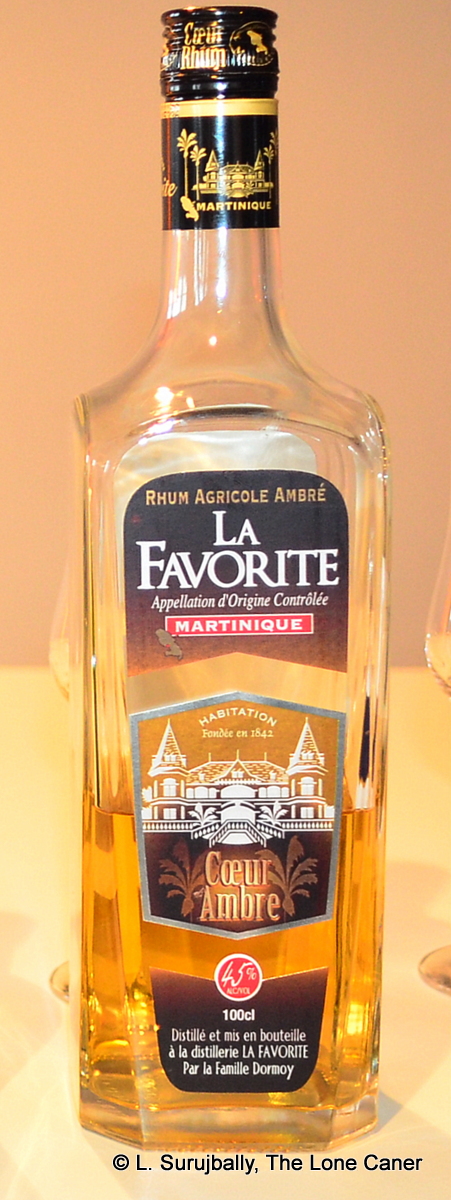
With all those distilleries dotting the landscape of Martinique, one could be forgiven for thinking there’s rather little to chose among the agricoles they make aside from canny marketing. I used to think so myself, until I began to amass an ever-increasing series of tasting notes and memories on these rhums from the myriad estates, and realized that there are indeed noticeable points of difference between any one and any other. And that’s not just between the distilleries, but among the various expressions issued from the same one, as well.
Saint James is a good example of this, with their pot still white being a world away from their 7 year old; there are the various Neisson or Bally releases, and another is La Favorite, with their dissimilar pair of the Cuvée Privilège and Cuvée Spéciale. All the others follow similar trajectories of quality and variation
But these are perhaps bad examples. They are good rums, prestige rums, aged a bunch, known as special. At the same time, down by the docks, at the layman’s end of the spectrum for everyday hooch, lurks the La Favorite Coeur Ambrė — a cousin to their Rhum Vieux we looked at some years back and similar to most entry-level offerings usually ignored by the cognoscenti but snapped up by the unpretentious and had just so.
The Ambrė is cheap, it lacks any sort of serious pedigree (18 months ageing, 45% ABV), and you’d think there’s nothing to distinguish the humble Martinique-made, AOC-compliant rhum from any other bottom-feeding prole-supplying ambre out on the market made by the other maisons on the island.
Well…yes. But don’t rush too quickly past this young rhum from la Favorite just yet, because I think that for what it is, it’s not half bad. Just take a sniff at it: the nose is sharp and a bit unrefined, yet remarkably clear for something so young – it has some herbs, some citrus, it’s a shade musty and dry, and also presents a nice amalgam of vanilla, cereals, rye bread and gruyere.
You are, admittedly, met with something of a blast of the pepper shaker when you taste it. Stay with it and it evens out nicely – there’s sweet and salt, crushed almonds and walnuts, musty rooms in need of dusting, straw baskets, and fresh cut lumber/ Quite a bit for something so young, I’d say, and that’s not even all – you get some herbals, grass, florals and light oakiness as well. Plus a twist of lemon zest. All of this concludes with a sharp and unrefined finish of grass, green apples and grapes, some bitter chocolate – it’s too ragged and jagged, though, which shows its youth and kind of messes up the good stuff that came before.
Overall, it needs some further ageing to be appreciated as a drink in its own right and since La Favorite has a few others up the value chain, they make no bones about relegating it as low-end cocktail fodder. But I submit that it does possess a certain crisp liveliness, an unanticipated quality which its price and appearance don’t entirely convey. Admittedly, there aren’t a whole lot of tastes running around begging to be noticed, and the complexity is pedestrian at best. What I like is that it never pretends to be other than what it is, and those notes that were discernible are reasonably well-defined, mesh decently, and provide an interesting experience. For an agricole rhum less than two years old and costing in the forty-buck range, that’s hardly a disqualifier. In fact, I think it’s something of an achievement.
(#711)(80/100)
A quick history:
La Favorite is a small family owned distillery in Martinique which has an annual rum production of around 600,000 litres. The original sugar plantation was initially called “La Jambette” for a small adjacent river, and was renamed La Favorite in 1851 when Charles Henry acquired it, and subsequently installed a distillation apparatus and began making rhum; anecdotes refer to the islanders calling it their favourite rhum, or Napoleon himself remarking it was his, but who knows. The company ran into financial difficulties in 1875 (maybe this was due to the establishment of the French 3rd Republic, and the defeat of the monarchists whom the planters supported, but that’s outside the scope of this brief bio).
Somehow the plantation limped along until 1891 when a hurricane did so much damage that the whole operation was shut down for nearly twenty years. Production recommenced in the early 20th century (1905 per the website, though other sources say 1909) when Henri Dormoy bought the company from Mr. Henry and added a railway line through the plantation. The boost given by the first world war allowed La Favorite to become truly commercially viable and it has been chugging along ever since, still using steam powered distillery apparatus, hand-glueing the labels to the bottles, and manually applying the wax over the top. Since 2000 when Henri’s own son Andre (who had bought the shares of the distillery from the other family members) died, his son Paul Dormoy has run the show there, and was joined in turn by his own son Franck in 2006, making it one of the few family owned establishments remaining on the island.
come si fa a comprarlo?
(How to buy it?)